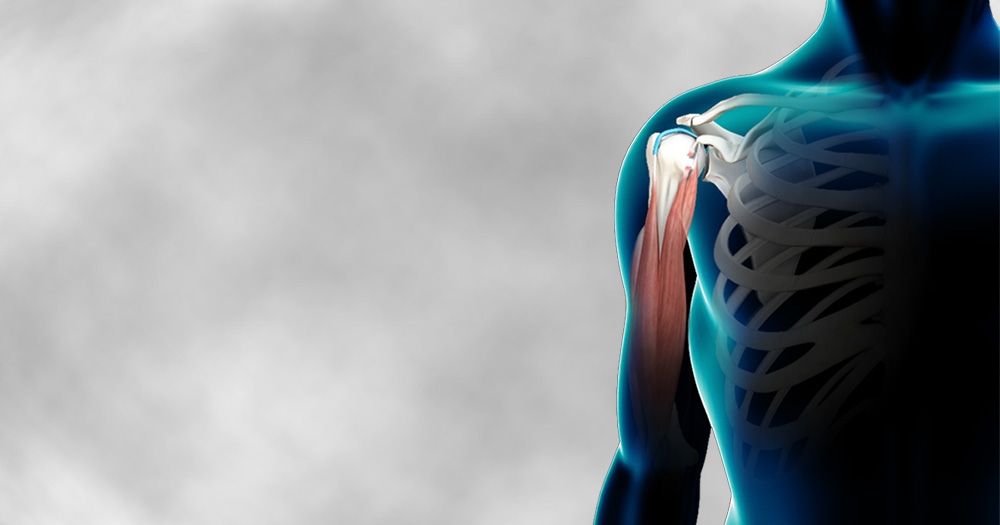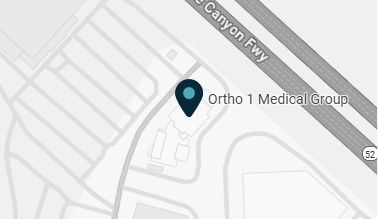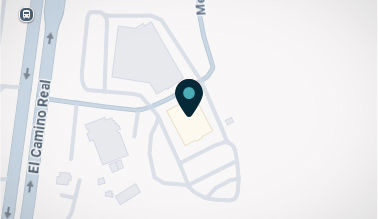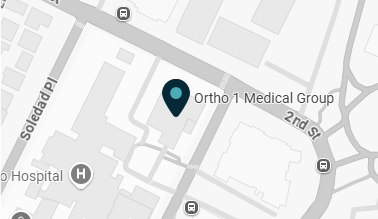Fractures can be a daunting experience, significantly affecting your daily life and mobility. Whether it's from a fall, an accident, or a sports injury, dealing with a broken bone is never easy.
Fortunately, advanced surgical techniques, like open reduction internal fixation (ORIF), can offer effective solutions for severe fractures, ensuring proper healing and restoring function.
At Ortho 1 Medical Group, with offices in San Diego, Chula Vista, La Jolla, and Coronado, California, our board-certified orthopedists bring extensive experience and expertise to each complex fracture, helping patients recover fully and regain their mobility.
Not all fractures mean you need to have surgery. Many can heal with simple immobilization methods, like casting or splinting.
However, certain types of fractures do require surgical intervention to make sure your bone aligns in the right way and heals properly. Here are common scenarios where surgery is necessary:
- Your fracture involves one of your joints
- Your bone is shattered in multiple pieces and needs reconstruction
- Your fractured bone is significantly out of alignment
- You have a compound (open) fracture that breaks through your skin
- Your fracture is in a critical location, such as your femur
If you’re facing a fracture that might require surgical intervention, understanding what to expect before and during an ORIF procedure helps ease your worries and prepares you for the best recovery possible.
Keep reading to learn how an ORIF helps a fracture and the ways we can help.
Understanding how ORIF works to help your fracture
Before your ORIF surgery, your Ortho 1 Medical Group provider conducts a thorough evaluation to determine the best treatment for your fracture.
This includes reviewing your medical history, conducting physical exams, and ordering imaging tests such as X-rays or CT scans to understand the fracture's specifics.
If ORIF is right for you, you receive detailed instructions about how to prepare for surgery, including fasting guidelines and medications to avoid.
The surgical team also discusses anesthesia options with you, usually involving general anesthesia and a regional block to numb the area.
The ORIF surgery itself is a two-part procedure. Here’s how it works:
Step 1: Open reduction
The first step involves your Ortho 1 Medical Group surgeon making an incision to directly access your broken bone. Your provider then manually adjusts the bone fragments to their correct positions.
Step 2: Internal fixation
Once your bones are aligned, your surgeon uses specialized hardware such as screws, plates, pins, or rods to secure your bones in place. This hardware stabilizes your bone during the healing process.
The type of hardware used depends on the fracture's location and severity. Sometimes, this hardware remains in place permanently, while in other cases, it may be removed after your bone has healed.
Recovery after ORIF surgery
What you can expect after ORIF surgery depends on factors like your age, overall health, and the fracture's severity. However, here’s a look at what you can generally expect:
Initial healing
The initial healing phase can take anywhere from 3-12 months, depending on your unique factors. During this time, it’s important to follow your Ortho 1 Medical Group provider’s instructions and avoid putting stress on your repaired bone.
Physical therapy
Most patients have physical therapy to regain their strength, flexibility, and function. Your therapist personalizes a program to your specific needs, helping you gradually return to your daily activities.
More information about ORIF surgery
At Ortho 1 Medical Group, our board-certified orthopedic surgeons are dedicated to providing personalized care to your unique needs.
We understand that every fracture is different, and we work to offer the most effective treatment plans to make sure you enjoy optimal recovery.
If you or a loved one is facing ORIF surgery, don’t hesitate to reach out. We take time to discuss your goals and needs, offering guidance and personalized recommendations for even the most complex fractures.
Schedule a consultation online or over the phone with one of our specialists at the location nearest you in the San Diego area so you can get back to living your fullest life.





















